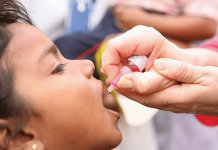Ehsaas Emergency Cash (EEC) income support instrument remains one of the largest social protection program ever undertaken in this country which will provide Rs144 billion to 12 million families (about 72 million people), Rs12,000 one-time cash transfer per family. With that out of the way—we have to acknowledge two very important things: one: this requires rigorous data analytics and use of digital tech which is ambitious and two: the current mechanism is not the most effective.
Under the program announced by Sania Nishtar who heads the Poverty Alleviation and Social Safety Net program team, there are three categories of identified beneficiaries: Category 1 which includes 4.5 million Kafalaat beneficiaries who will get Rs1,000 over and above the Rs2,000 per month they currently receive. Category 2 includes higher eligibility/poverty threshold used to identify 4 million beneficiaries through the National Socioeconomic Database and Category 3 includes 3.5 million from districts. This latter will include new households.
While the first two categories will already have identified 71 percent of all beneficiaries, the third category is being implemented under an SMS campaign. The verification process here uses multiple databases across the country which will evaluate eligibility based on car ownership, travel history, remittance collections among other criteria. The current Kafaalat beneficiaries have undergone a long rigorous profiling process (based on the poverty score card) including third-party validations and other checks. So the process of verification, however analytically sound it is may not be as rigorous or the most effective for this third category. There simply is no time! By definition, this is an emergency program where time is of utmost importance. To be fair, this also applies for the category 2 beneficiaries under the ECC as well since they have recently been selected.
The other problem is the process with which data for third category is collected. A presentation by Sania Nishtar shows that of the 22.6 million SMS received by April 3, about 6.6 million were those already part of the category 1 and category 2 databases. Meanwhile, 12.7 million were told (via SMS) to contact their District Central Offices. The Ehsaas team was able to identify unique citizens out of these which comes to 9.4 million people. Now these people will have to contact their DCs who will prepare a list of citizens and forward these lists to the provinces who will then compile lists and recommend them for the disbursement. The final list will undergo the aforementioned verification process.
But wait. Let’s go back a little. Nearly 9 million people have been asked to either head to the DC offices—which in a lockdown and time of physical distancing is infeasible—or register themselves to the web portal. How are these people expected to have access to the internet? Moreover, the district to province to federal compilations will require vast organizational capacity and human resource. Do we see the difficulty yet?
This campaign is complicated, not least because it will be difficult to verify each individual that applies for the program but because of data collection inefficiencies, multiple layers of bureaucracies required, and sheer time needed to check for robustness since the current verification criteria is lax.
Moreover, the coverage of 12 million households is too small. Data from the Labor Force Survey 2017-18 shows that 56 percent of the current labor force is vulnerable including daily wagers and own account workers (that’s 32 million people). Meanwhile, 74 percent of the entire labor force is working without any formal contract (that’s 43 million people).
This means, their incomes are uncertain. Another statistic shows 31 percent of daily wagers with no contract are on the streets. The category 2 beneficiaries include men who are potentially daily wagers losing work as told by Nishtar. These are only 4.5 million people. If the ECC coverage was higher, then the gaps in verification would have handled itself—those who were needy would have a lower chance of missing out by virtue of the coverage itself. It seems that the SMS and online drive will keep many needy people out of reach.
By Asim Hussain




